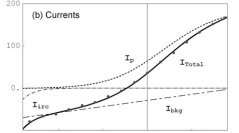

 Cryptogamie, Algologie
27 (4) - Pages 403-417
Cryptogamie, Algologie
27 (4) - Pages 403-417Lamprothamnium succinctum is a salt-tolerant charophyte that inhabits non-marine saline environments. Chara australis is a salt-sensitive charophyte that inhabits fresh waters. Electrophysiological responses of internodal cells from these species to increased Na+ concentration in the medium are modeled and compared. A greater background conductance in high Na+ media is found in both charophytes. Lamprothamnium is able to maintain a highly negative resting potential difference (PD) by increasing the rate of proton pumping. Chara cells, faced with high Na+ medium, respond in more varied ways. However, even when it occurs, the increased pumping fails to prevent depolarization of the membrane PD from -243±15 mV (5 cells), to -188 ±15 mV (5 cells), over an average 65 min high Na+ medium exposure. Furthermore, the proton pump becomes very sensitive to both depolarization and hyperpolarization imposed on the membrane by voltage clamp. Such pump inhibition impedes recovery of the negative resting PD after voltage or a spontaneous action potential. The significance of the small differences in one transporter rendering the plant salt-tolerant is discussed in the light of evolutionary adaptations.